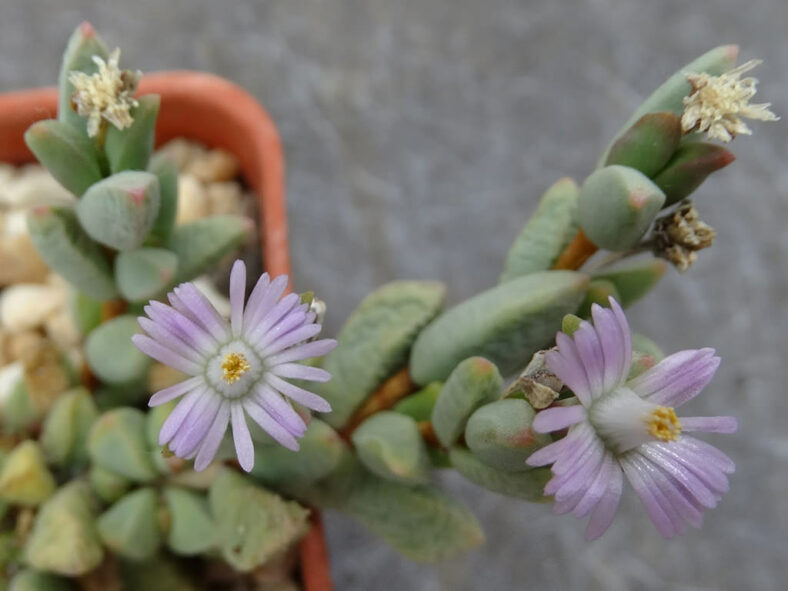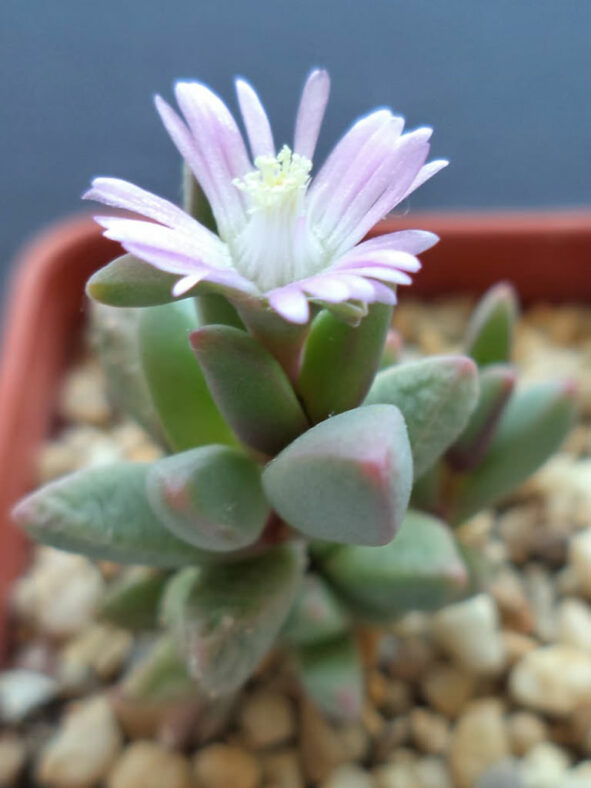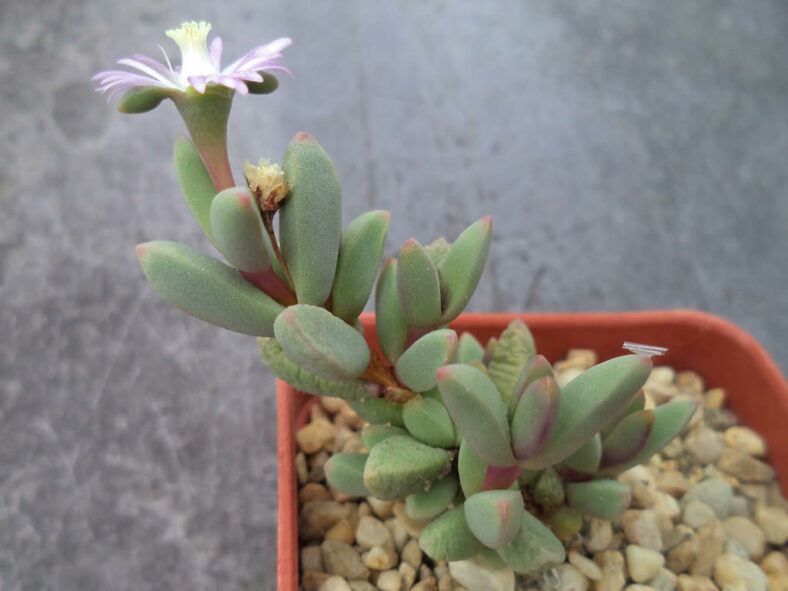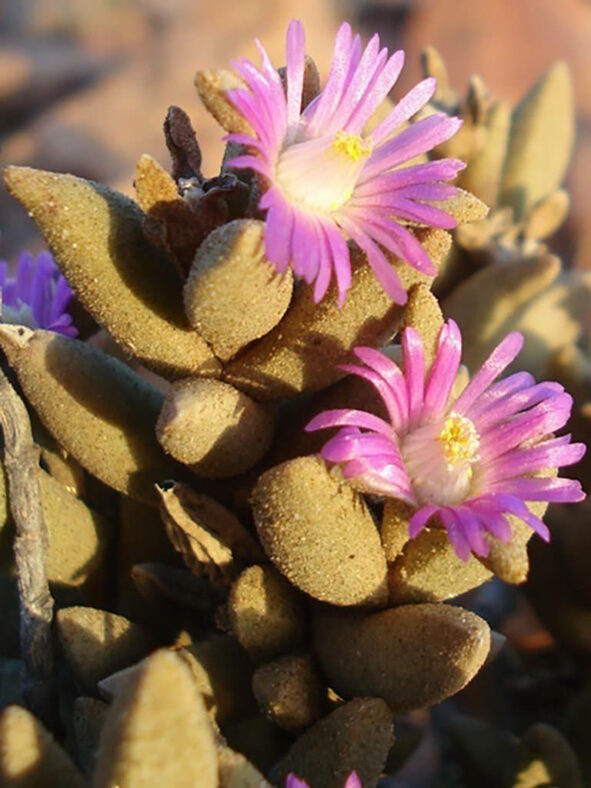Psammophora modesta is known locally as "gomvy," which means "gum fig" in Afrikaans.
Scientific Name
Psammophora modesta (Dinter & Berger) Dinter & Schwantes
Synonym(s)
Mesembryanthemum modestum
Scientific Classification
Family: Aizoaceae
Subfamily: Ruschioideae
Tribe: Ruschieae
Genus: Psammophora
Etymology
The specific epithet "modesta (pronounced mo-DES-tuh)" means "moderate, modest" and presumably refers to the culms of average height.
Origin
Psammophora modesta is native to South Africa and Namibia. It grows on gravel or sand-filled pockets in the extreme northwest of the Richtersveld and along the southern Namibian coast.
Description
Psammophora modesta is a succulent shrublet with reddish, decumbent branches and fleshy, green leaves with a rough appearance. It can reach a height of up to 6 inches (15 cm). Typically, the leaves are triangular in cross-section, sometimes cylindrical, and have pointed tips. They can grow up to 1.6 inches (4 cm) long, 0.4 inches (1 cm) wide, and 0.3 inches (0.8 cm) thick. The new leaves are sticky, and in the native habitat of the plant, they often appear brown from their sandy covers.
From late fall to midwinter, Psammophora modesta produces solitary flowers on short stalks. The flowers can reach up to 1 inch (2.5 cm) in diameter and have narrow, pale pink to magenta petals and a dense cluster of white stamens in the center. Bellow petals are five sticky, unequal sepals. The fruits are capsules with 4 to 9 locules.

How to Grow and Care for Psammophora modesta
Light: Psammophora modesta requires bright light but not too much direct sunlight. So, a windowsill that receives 4 to 5 hours of direct sunlight in the morning and partial shade in the afternoon will be a perfect spot for indoor growing.
Soil: The plant thrives in porous soil, allowing the water to drain away quickly. Therefore, use commercial soil for succulents or make your own well-draining mix.
Temperature: High temperatures are not a problem as long as there is plenty of fresh air, but this plant is not cold-hardy. It grows best in USDA Plant Hardiness Zones 9a to 11b, with average minimum winter temperatures ranging from 20 to 50 °F (-6.7 to 10 °C).
Watering: To keep your plant healthy, it is most important to know when, how much, and how often to water. During the dormant period, usually in summer, Psammophora modesta requires little or no water. In the fall, once it grows again, water thoroughly but allow the soil to dry between waterings.
Fertilizing: As long as you repot this plant every two years, it does not need fertilizer.
Repotting: Even if it can stay happy in the same pot for years, once in a while, you can repot your plant to give it more space anytime during the growing season. However, the best time is at the beginning of the growing season.
Propagation: Although it is usually started from seeds, Psammophora modesta can be easily propagated by division. Late summer, just before it begins to break dormancy, is the best time to divide the plant, while fall is the ideal time to sow the seeds.
Learn more at How to Grow and Care for Mesembs.
Toxicity of Psammophora modesta
Psammophora modesta is considered non-toxic and safe around kids and pets.
Links
- Back to genus Psammophora
- Succupedia: Browse succulents by Scientific Name, Common Name, Genus, Family, USDA Hardiness Zone, Origin, or cacti by Genus
Photo Gallery
Click on a photo to see a larger version.


